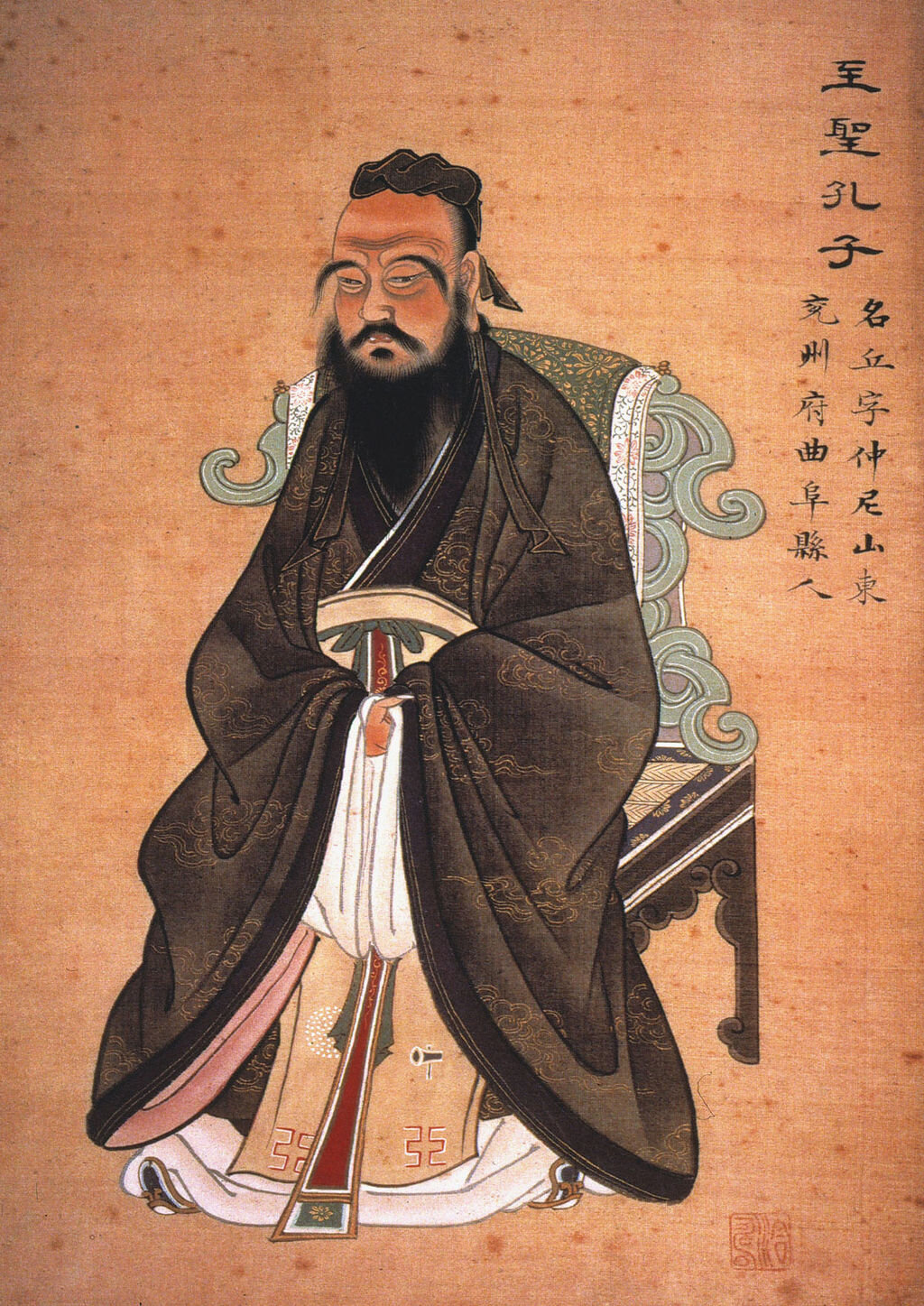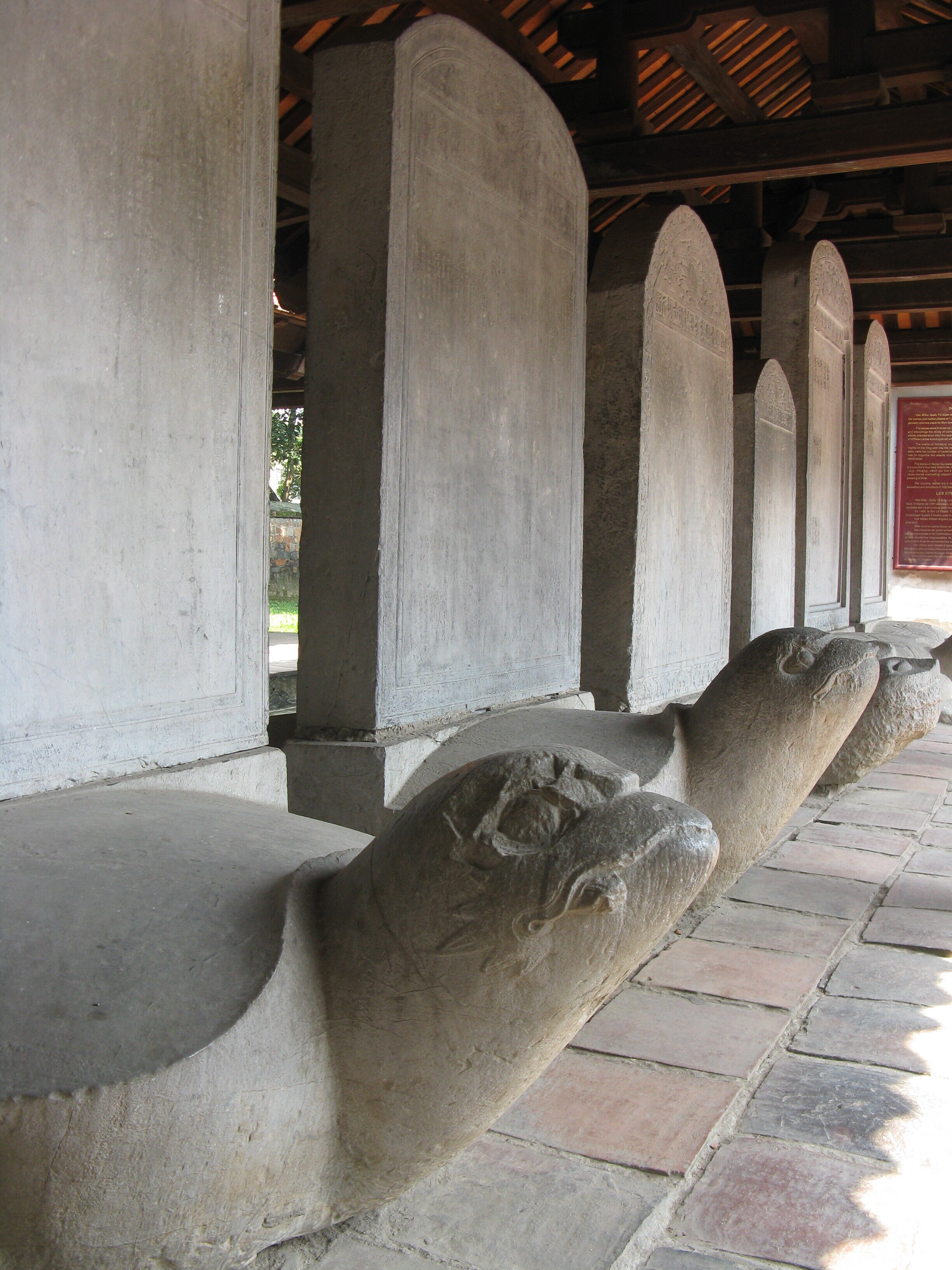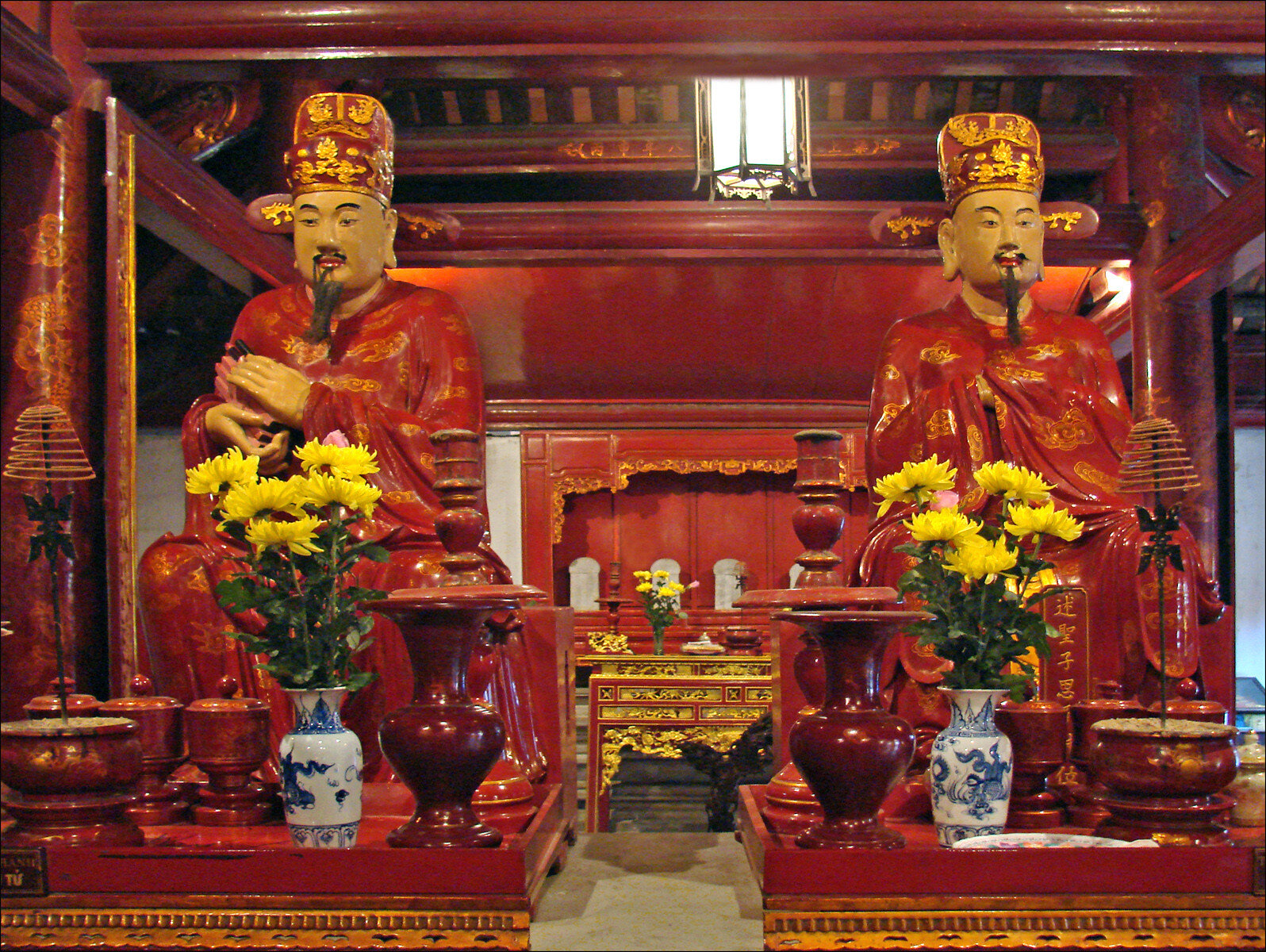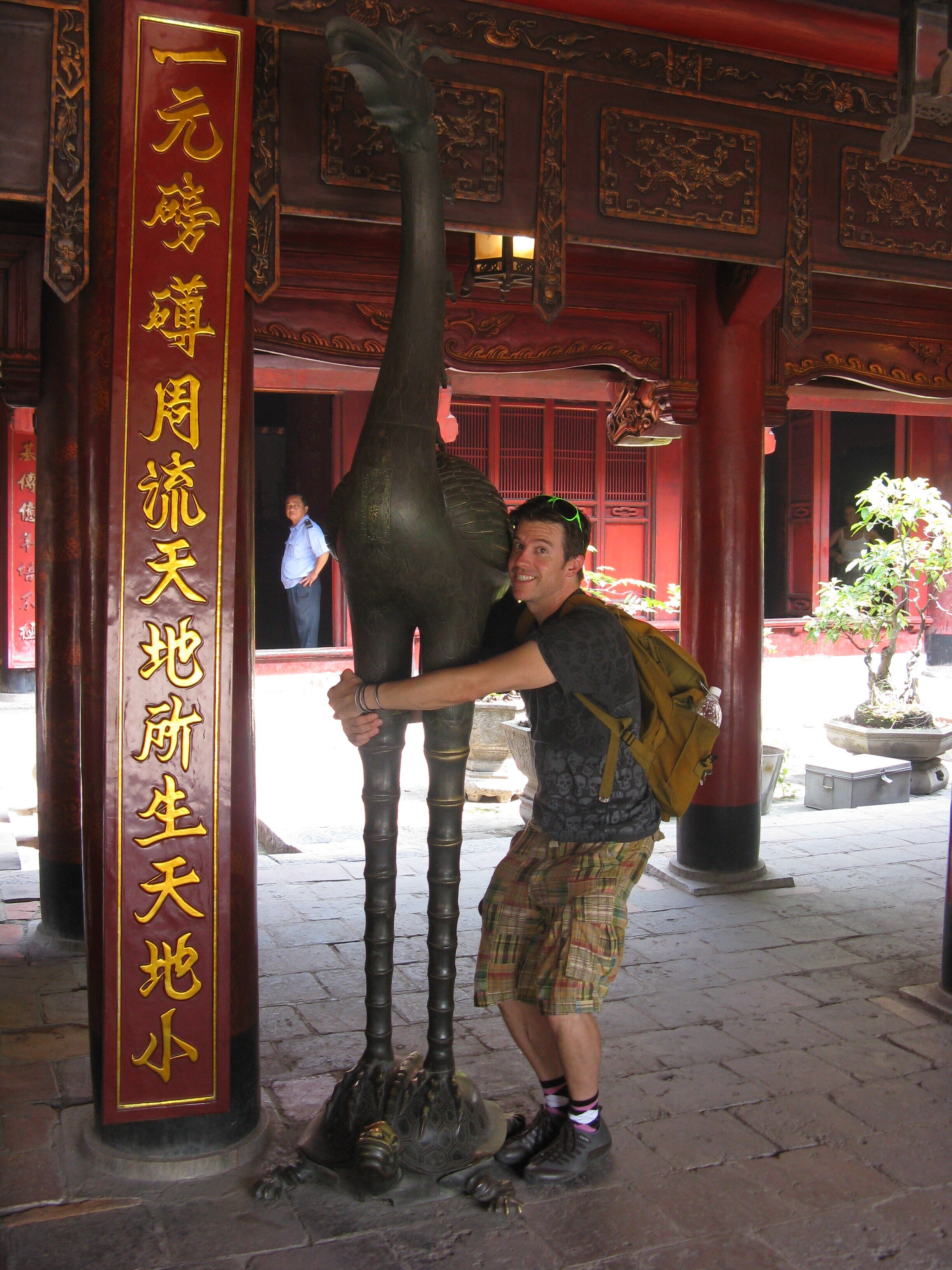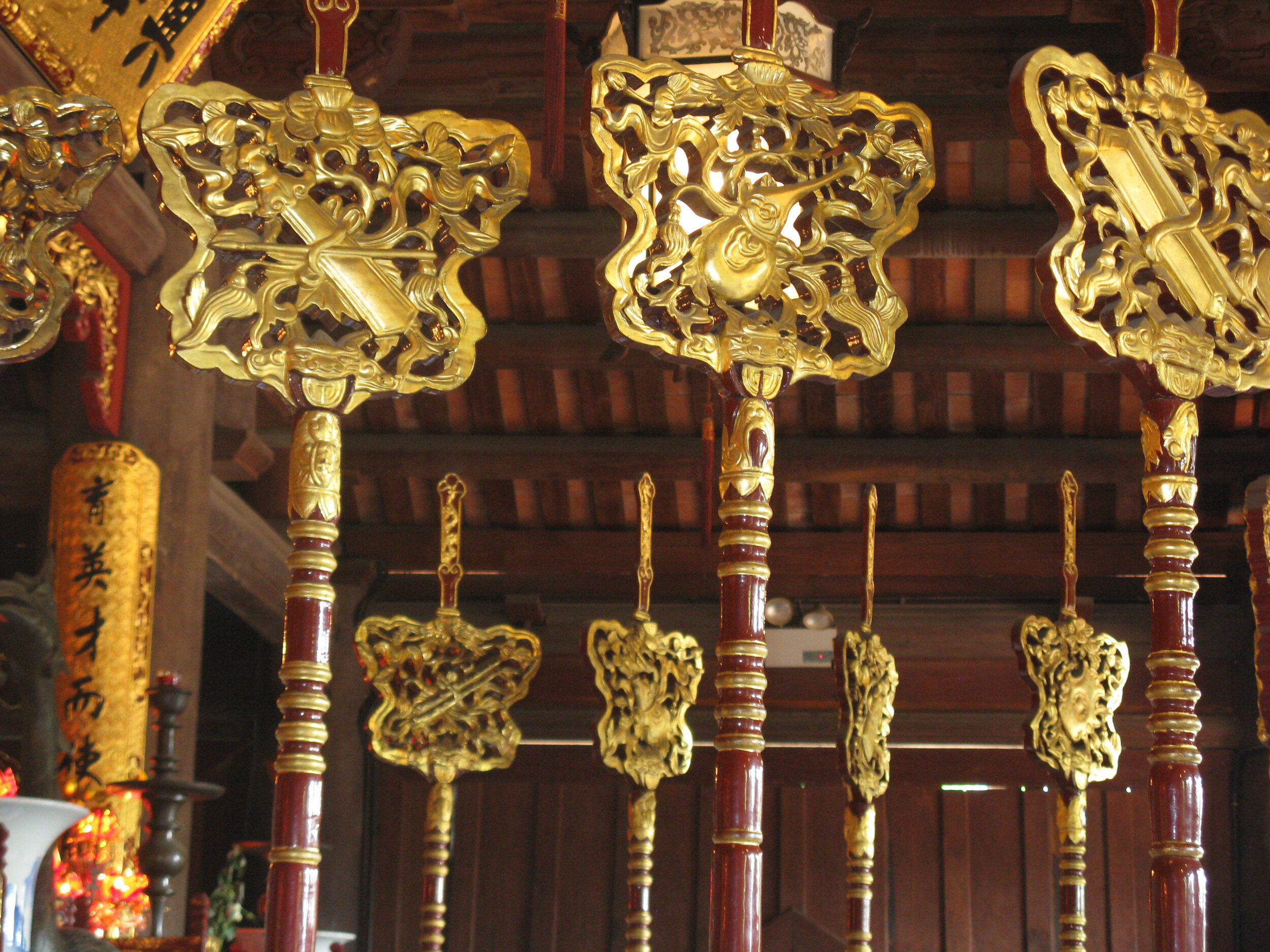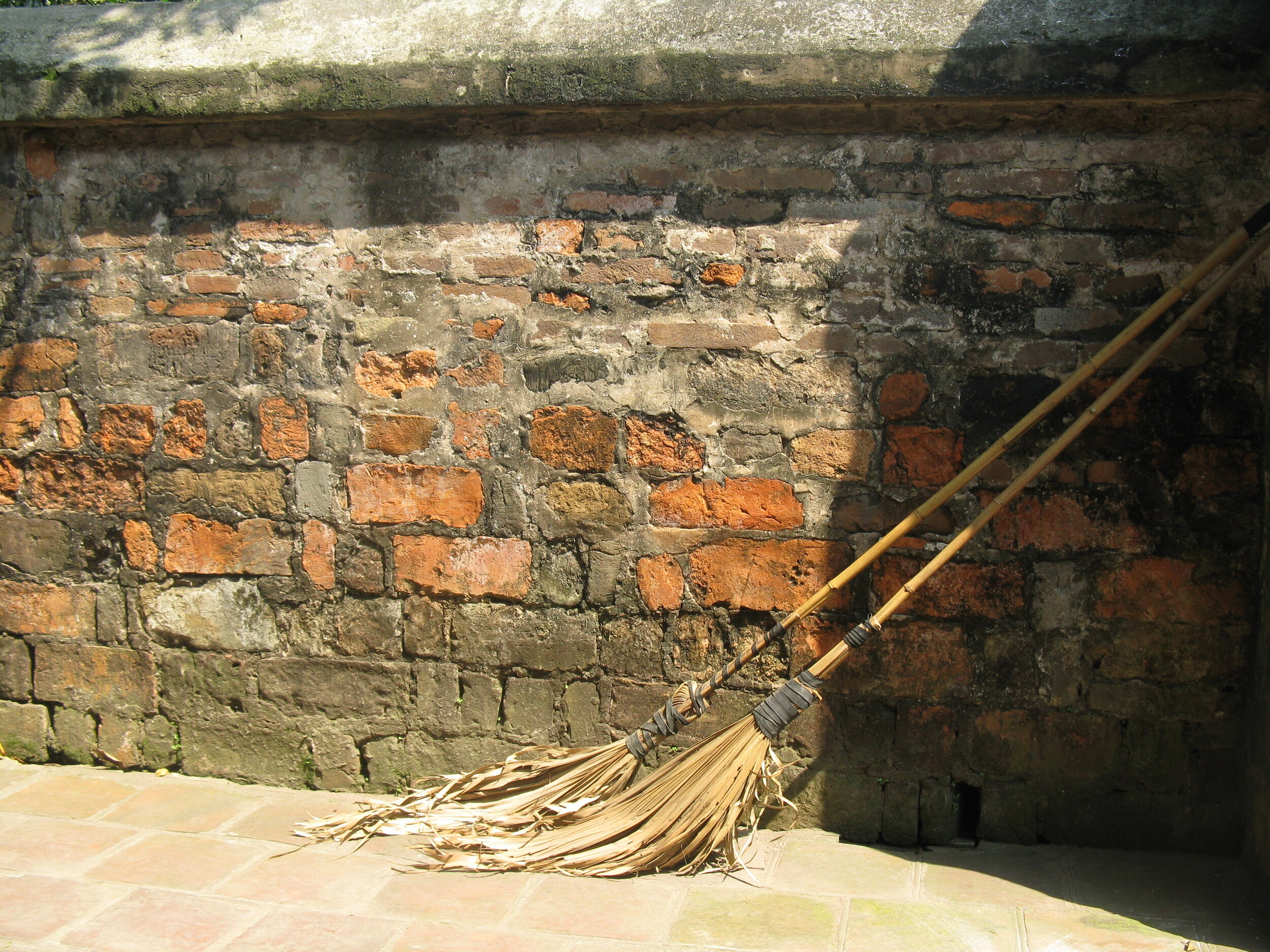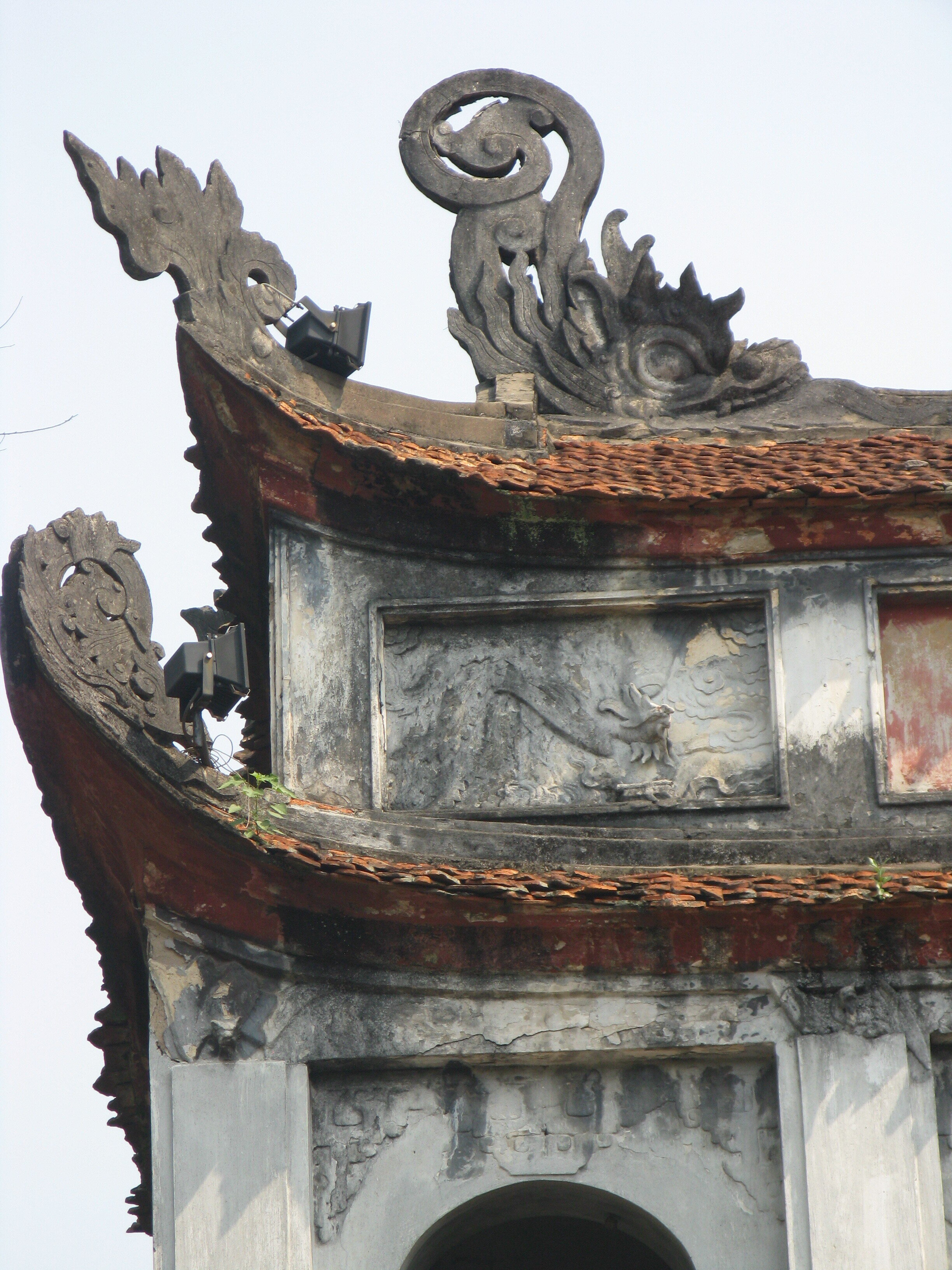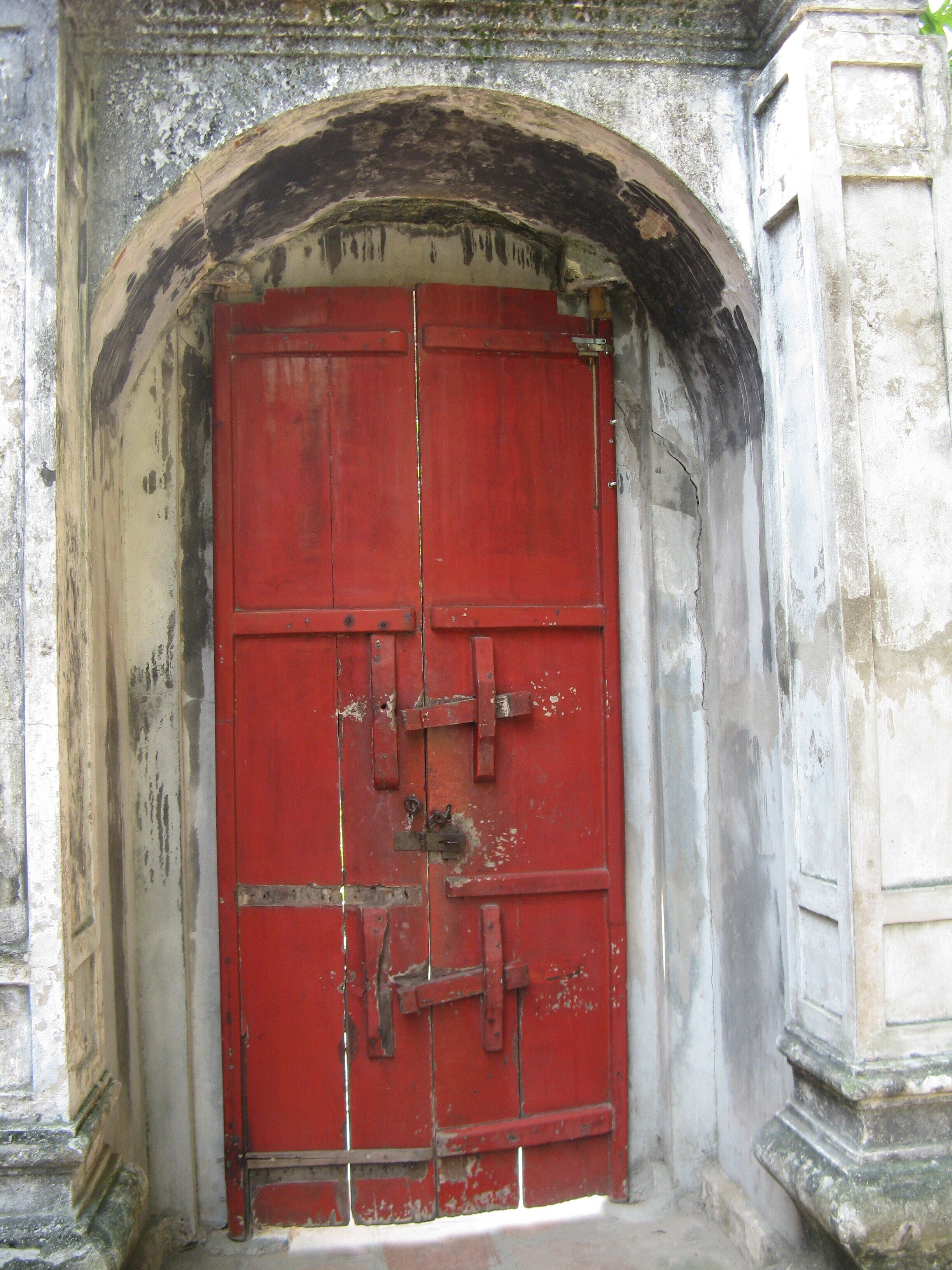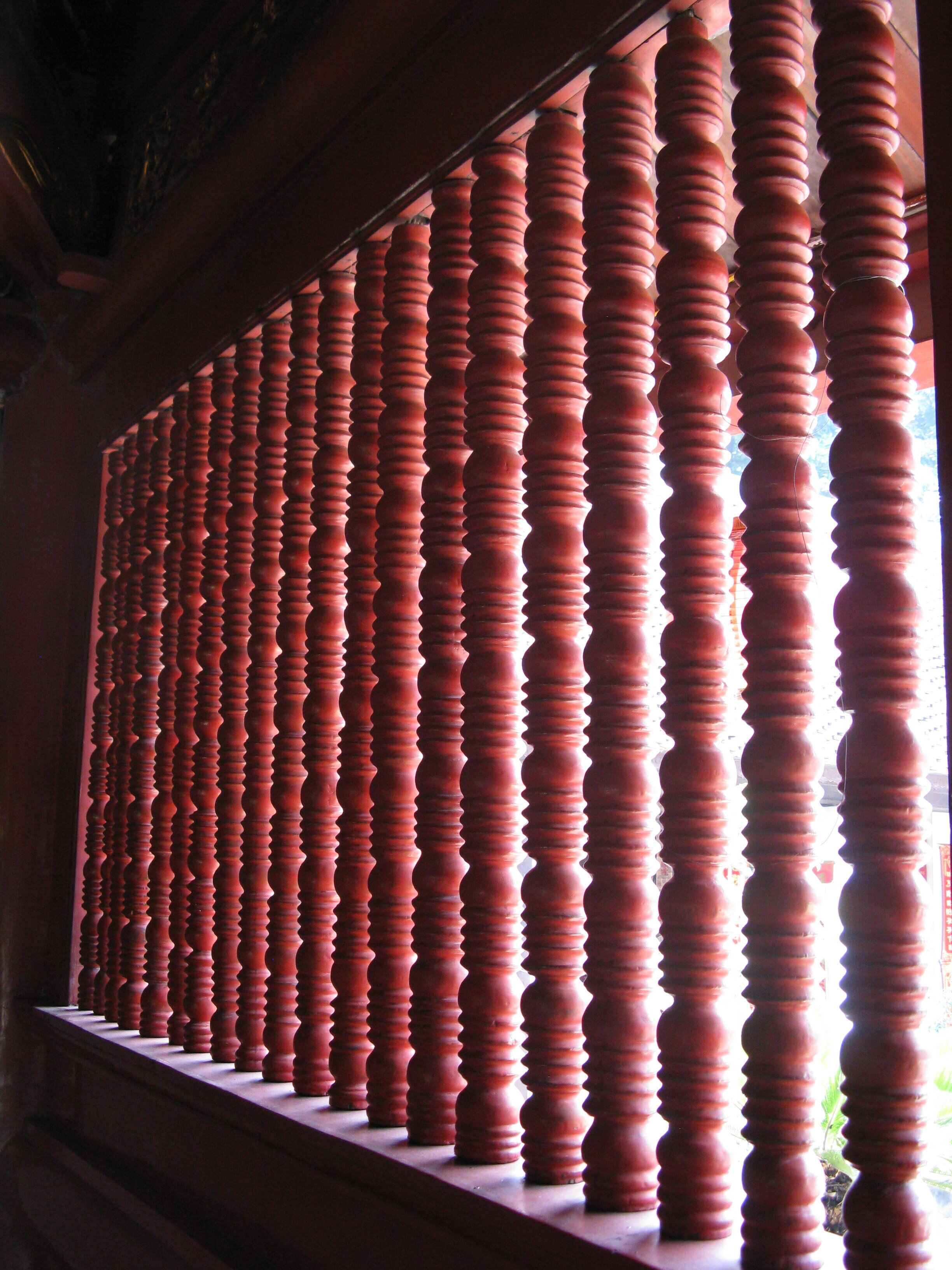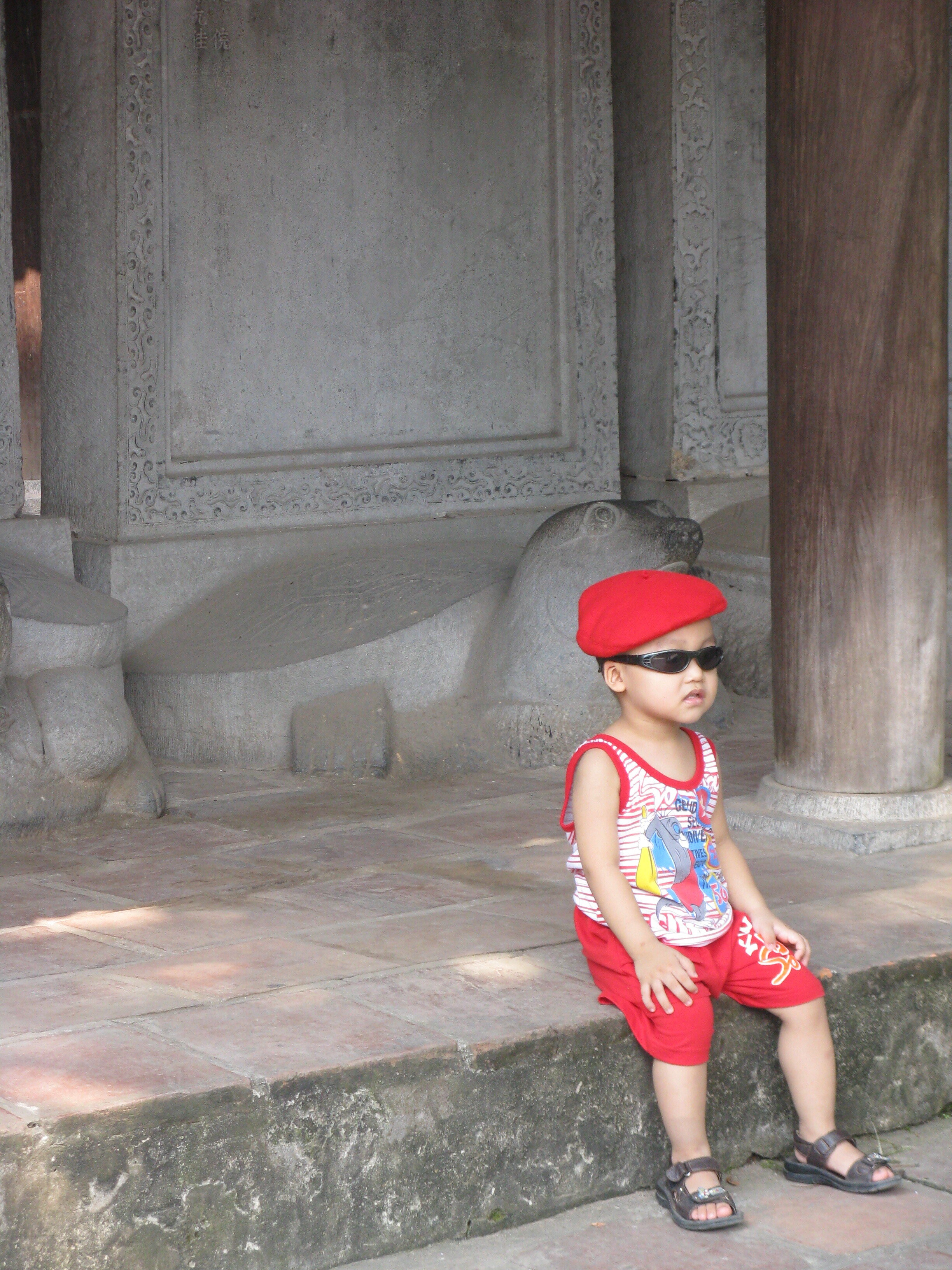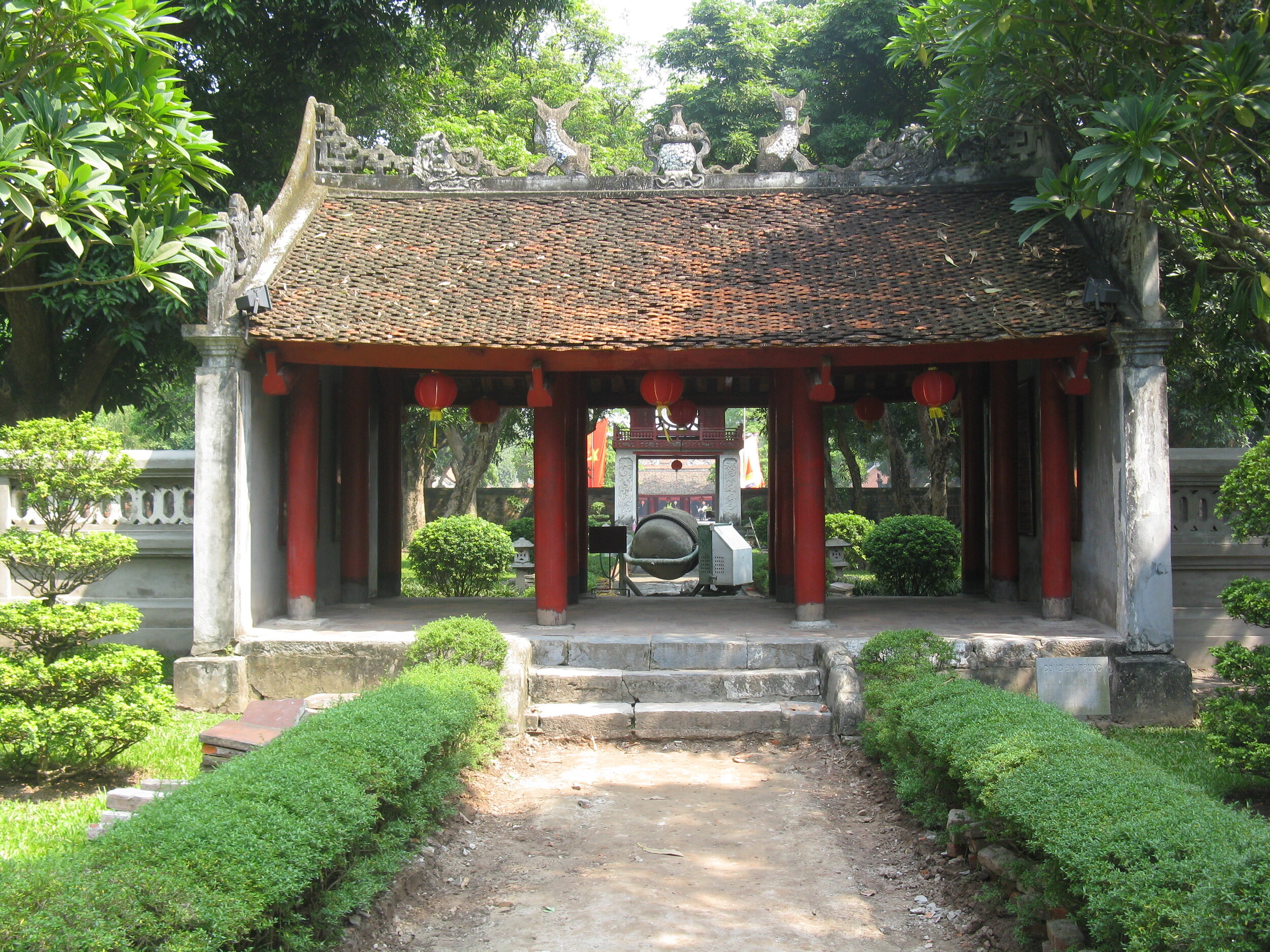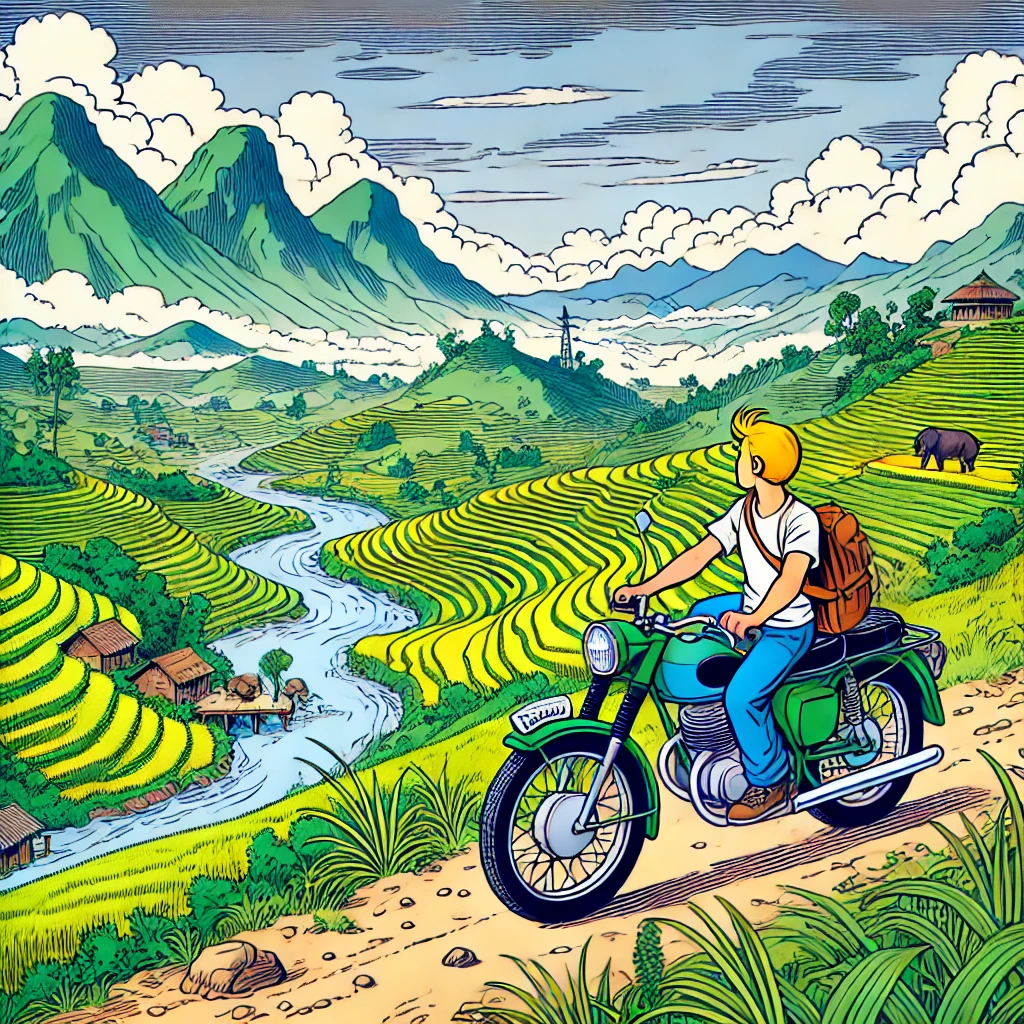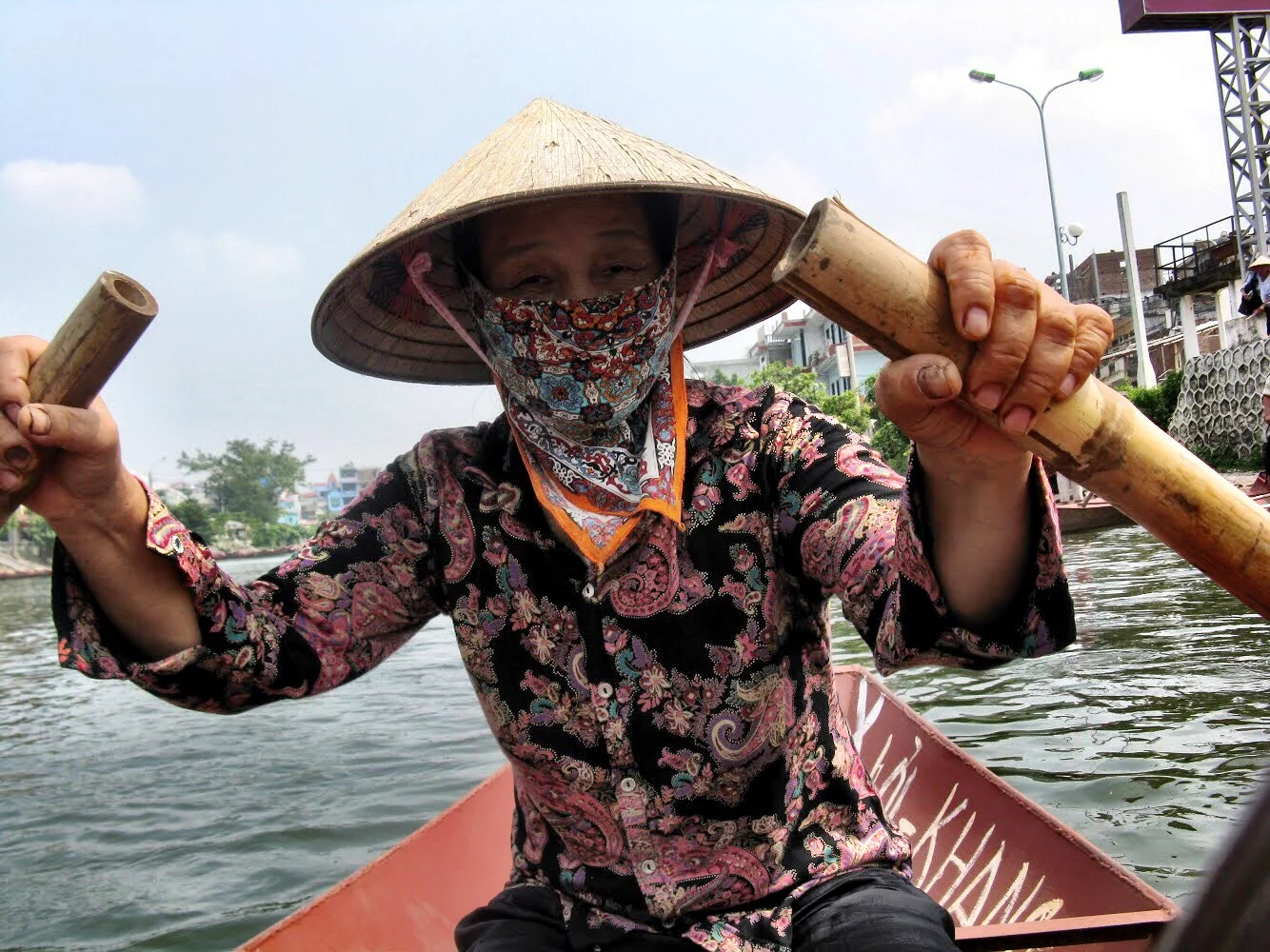Looking for things to do in Hanoi? Walk through the five courtyards of Van Mieu and Quoc Tu Giam, Vietnam’s oldest national university.
A pair of stone steles outside the main gates instructed everyone — even the emperor — to dismount their horses before entering the compound. It’s not as much of a concern nowadays.
One of the perks of staying in Hanoi’s Old Quarter is that its many attractions are within walking distance.
En route to one of the must-see destinations, the Temple of Literature, Wally, our friend Vanessa and I passed a shop selling trendy men’s short sleeve shirts. Sadly, even an XL in Vietnam would have been too small.
The Temple of Literature is this way — but who’s right? Wally or Vanessa?
We also passed the Imperial Citadel of Thang Long on our way to the temple.
The Temple of Literature was built to honor Confucius, who strived to have his followers live up to their ideal selves.
Quoc Tu Giam University
Van Mieu, the temple-cum-university, is located in the Dong Da district, a leafy green neighborhood about a 35-minute walk from the Prince II Hotel, where we were staying.
The temple was originally conceived and built in 1070 to honor Chinese philosopher Confucius.
A mere six years later, Quoc Tu Giam, literally translated as the “Temple of the King Who Distinguished Literature,” was established within the complex. The prestigious academy opened in 1076 to teach the doctrines of Confucius and his 72 disciples to the royal family and elite members of society before opening its doors to bright commoners in 1253. Students accepted into Van Mieu’s Quoc Tu Giam attended for three to seven years. The curriculum was influenced by Imperial China and involved rigorous study in classical Chinese literature, poetry and penmanship.
“The man who says he can and the man who says he can’t are both usually right.”
The core of Confucianism is aimed at creating the ideal man, emphasizing the disciplines of social, ethical and political conduct. It’s believed that if everyone followed these principles, the right balance would be attained, and social order would prevail.
Five courtyards lead through the complex.
Making an Entrance: the Great Portico
One of the first things you’ll see as you approach the historic structure is the impressive two-tiered main temple gate, Van Mieu Mon. The grand portico contains three doorways. The largest is in the center and was traditionally reserved for the emperor. To the left is a stylized relief of the “Tiger of the Mountain” and to the right, the “Dragon in the Cloud.” These flank the main doorway and represent symbols of the power of the king and the success of students and past scholars.
The second level holds a bronze bell that was rung when a notable person entered the temple complex. For some reason, it didn’t ring when we came in.
The three pathways beyond run the entire length of the complex.
Van Mieu’s design and layout are based upon Qufu, the birthplace of Confucius, located in the northeastern province of Shantung, China. Visitors take the central path, which leads to Dai Trung Mon, an open-air pavilion supported by red painted columns. Atop the middle of the roof, two carp with raised tails flank a gourd-shaped vase.
Bonsai trees are planted in the temple grounds.
The Five Courtyards
The Temple of Literature is divided into a total of five courtyards. Behind its high brick walls are a pair of courtyards where students would relax among the ancient trees and manicured lawns.
In the center of the second courtyard is the Khue Van Cac, the Constellation of Literature pavilion. Khue is the name of the brightest star in the constellation of 28 in the Milky Way. The square wooden structure is supported by four white stone columns and has an elaborate terra cotta-tiled double roof. Its circular windows with spoke-like slats symbolize radiating suns.
Well of Heavenly Clarity? More like Pond of Murky Greenness.
Muddy Waters at the Well of Heavenly Clarity
Wally, Vanessa and I passed through the Khue Van Cac and entered a third courtyard, where we found Thien Quang Tinh, the Well of Heavenly Clarity. Ironically it’s neither clear nor a well, but rather a large basin of murky green water.
Le Cour des Steles, as the French would say, as it was back in 1890
A similar shot of the Well of Heavenly Clarity, this one from the 1970s
Thien Quang Tinh and the Doctors’ Steles
Two great halls stand to either side of Thien Quang Tinh, containing the treasured stone steles placed atop the backs of turtle statues. In Vietnamese culture, turtles are a symbol of wisdom and longevity.
These tombstone-like monuments honor graduates and sit atop turtles, which represent wisdom.
The names commemorate more than 1,300 students who attained doctoral ranks in the triennial royal court exams held at Quoc Tu Giam and provide details about the greatness of the monarch issuing the exam, as well as some regional history. Over time, the turtles’ foreheads have become burnished by the touch of thousands of hands — it was considered good luck for students to rub the heads of the statues before their exams.
Shrines to two of Confucius’ followers
The Ceremonial Hall and Sanctuary of Great Success
The fourth courtyard is where you’ll find the Ceremonial Hall and Dai Bai Duong, the Sanctuary of Great Success, which was once considered so sacred that even the emperor was forbidden entry. Today, anyone may enter.
Inside is an elaborately decorated altar to Confucius and his four disciples Yanhui, Mencius, Zisi and Zheng Shen. One each side stands a bronze crane atop a turtle’s back.
Wally loves a giant crane — but feels bad for the poor turtle it’s standing on.
The Sanctuary of Great Success houses a shrine to Confucius.
This part of the temple was once so sacred that even the emperor was forbidden entry. Today, you’re free to roam about its confines.
From University to Pagoda of Crows
The fifth and final courtyard is where the actual university, Quoc Tu Giam, once stood. It lay abandoned when the French arrived in 1883 and was referred to pejoratively by them as the Pagoda of Crows since a flock of the black birds nested in an old mango tree on the site. The French razed the original building to accommodate the sick and wounded during wartime.
The roots of a massive banyan tree allow Wally to take a dramatic shot.
Duke taking a break while exploring the temple
Today, there are several exhibits within the reconstructed academy, including a statue of Chu Van An, one of the academy’s rectors and a beloved figure in Vietnamese history for his dedication to teaching.
Fortunately, the Temple of Literature has retained most of its original architectural style and character through multiple wars and restorations. It was declared a monument historique in 1906 by the French administration and restored by the École Française d’Extrême-Orient in 1920. Admission is 30,000 Vietnamese dong, or about $1.30. –Duke
A dragon undulates along the rooftop of the sanctuary.
Temple of Literature
58 Quốc Tử Giám
Văn Miếu
Đống Đa
Hà Nội 100000
Vietnam



